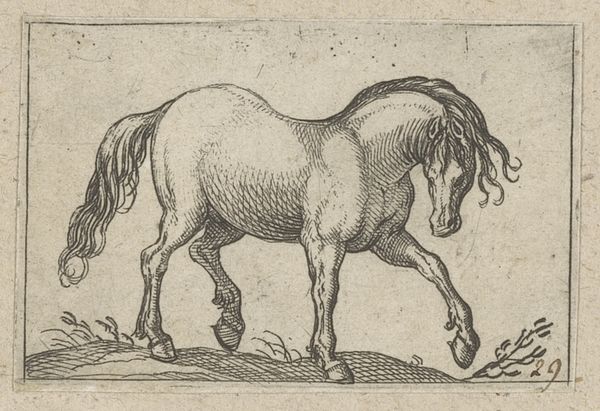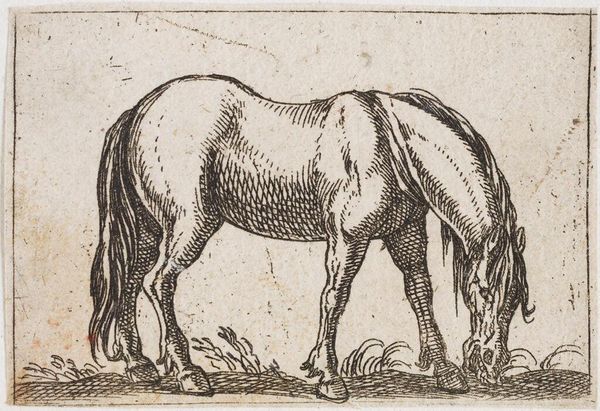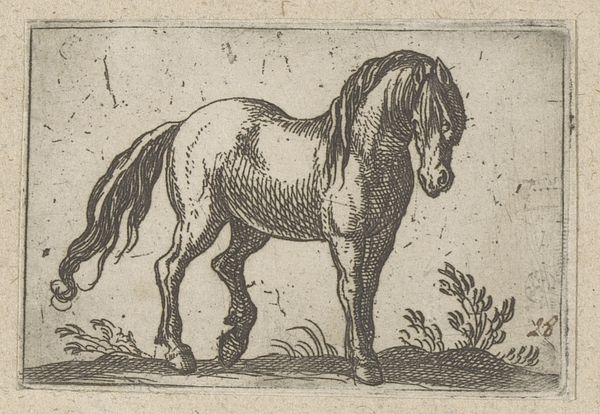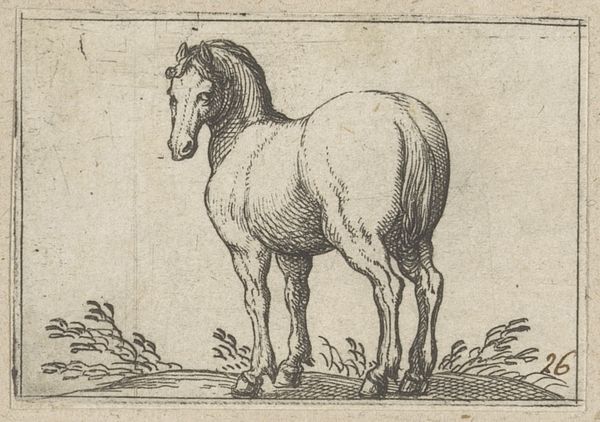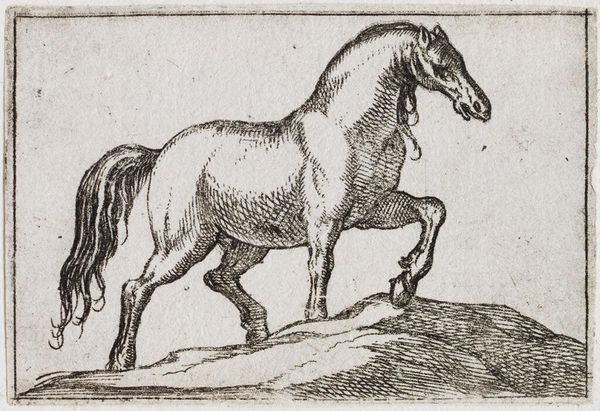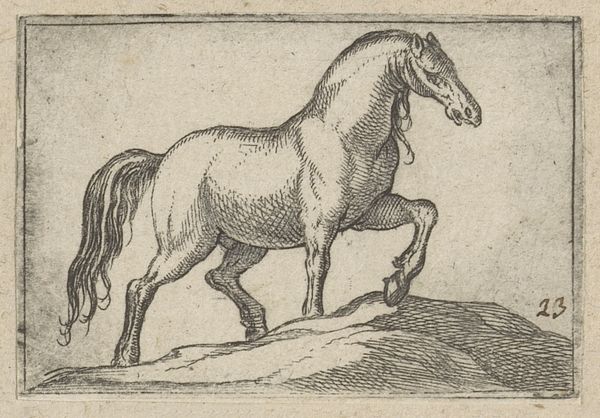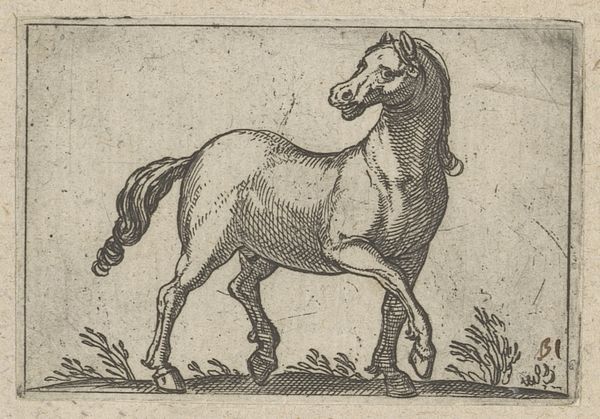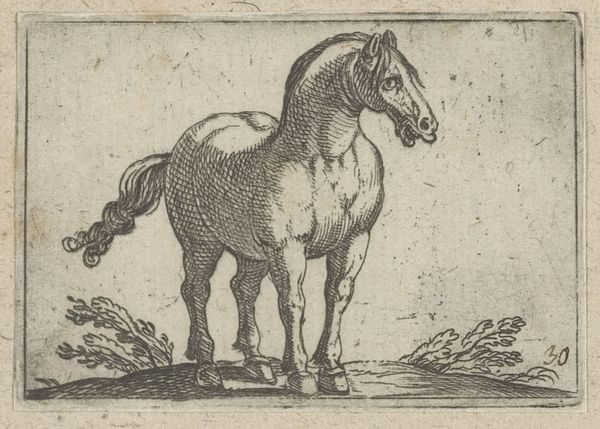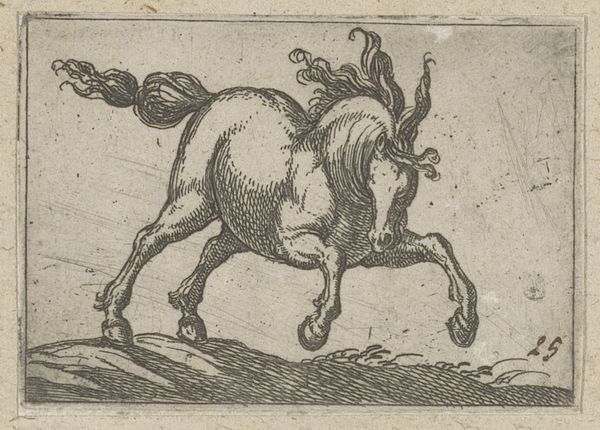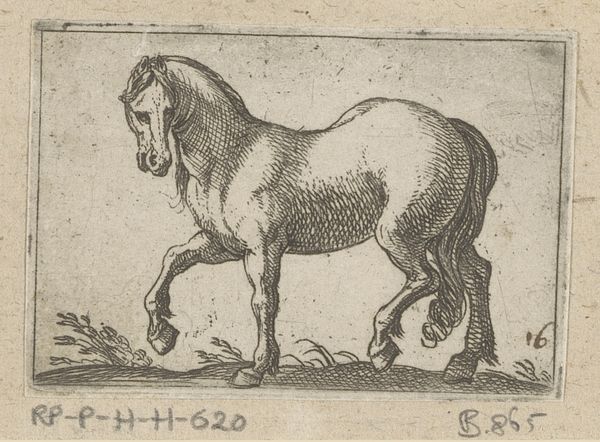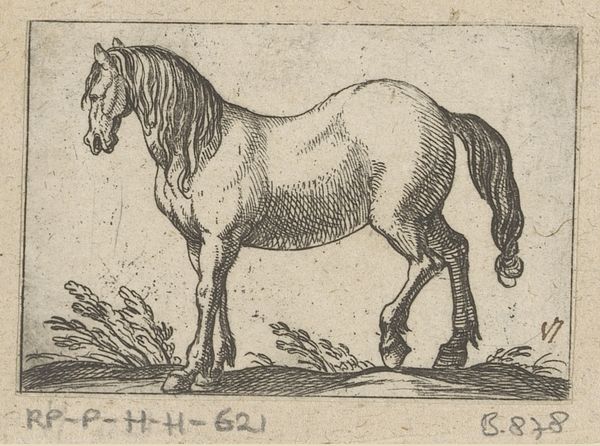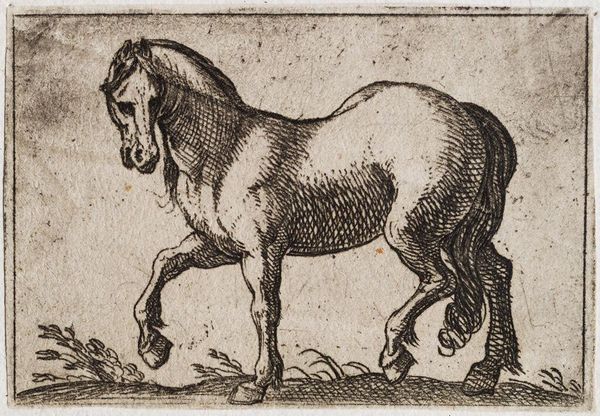
drawing, print, engraving
#
drawing
#
baroque
#
animal
# print
#
pen sketch
#
pencil sketch
#
pen-ink sketch
#
horse
#
line
#
italian-renaissance
#
engraving
#
realism
Dimensions: height 45 mm, width 66 mm
Copyright: Rijks Museum: Open Domain
Curator: Welcome. We’re standing before a delicate engraving titled "Grazend paard naar rechts gewend," which translates to "Grazing Horse Facing Right." Created sometime between 1565 and 1630, the work is attributed to Antonio Tempesta. The medium here is quite interesting – an engraving rendered in ink, giving the artwork a strikingly detailed, linear quality. Editor: My first impression? Calm. Serene, almost. There's a real sense of peacefulness about this horse, just quietly going about its business. The detail, though, is amazing! You can practically feel the texture of its coat just through the lines. Curator: Absolutely. Tempesta, situated historically within the Italian Renaissance transitioning towards the Baroque, displays an acute attention to realism, particularly in animal studies. Examining this piece through the lens of Renaissance humanism and its relation to the animal kingdom, one can investigate shifting perceptions of animals in European art and society during this time. How are animals represented? What is their role? And what underlying ideological work do such depictions perform? Editor: Hmmm...ideological work. I just see a horse enjoying lunch. I mean, the Baroque influence, maybe I see it in the dynamic curves of the horse's body, but I'm mostly struck by how… present it feels. Like a quick sketch of a real animal. There’s almost a childlike wonder in capturing this simple moment. Ever just watch a horse graze? It’s kind of mesmerizing. Curator: That observation speaks to a crucial tension within art history. While the image presents simplicity, one cannot divorce it from broader conversations. We should also consider questions of ownership and class, who has access to horses and landscapes to the expense of others? The composition isn't simply an innocent snapshot; rather it is framed within power structures. Editor: You know, sometimes I think we overcomplicate things. Maybe Tempesta just liked horses? Look at those delicate lines forming the mane; it’s a labor of love. Not everything has to be a referendum on societal inequality, right? Sometimes, a horse is just a horse, and a lovely one at that. Although thinking about labor of love, this one does bring to mind something about humans taking pleasure and comfort with the use of other species as workers or transport. It makes me a little uncomfortable, but it’s so beautiful and calm I had missed that entirely before! Curator: Well, I think the complexity comes from us, not necessarily imposing it. Art endures by inviting discussion. The lines are, admittedly, beautiful. Editor: Enduring is right. So much to see in such a small piece, and in thinking about it so much more too. Thank you. Curator: And thank you. It’s precisely that kind of multilayered engagement that breathes life into these historical artifacts, bringing to life not only their aesthetic values, but to think of social and environmental justice.
Comments
No comments
Be the first to comment and join the conversation on the ultimate creative platform.
